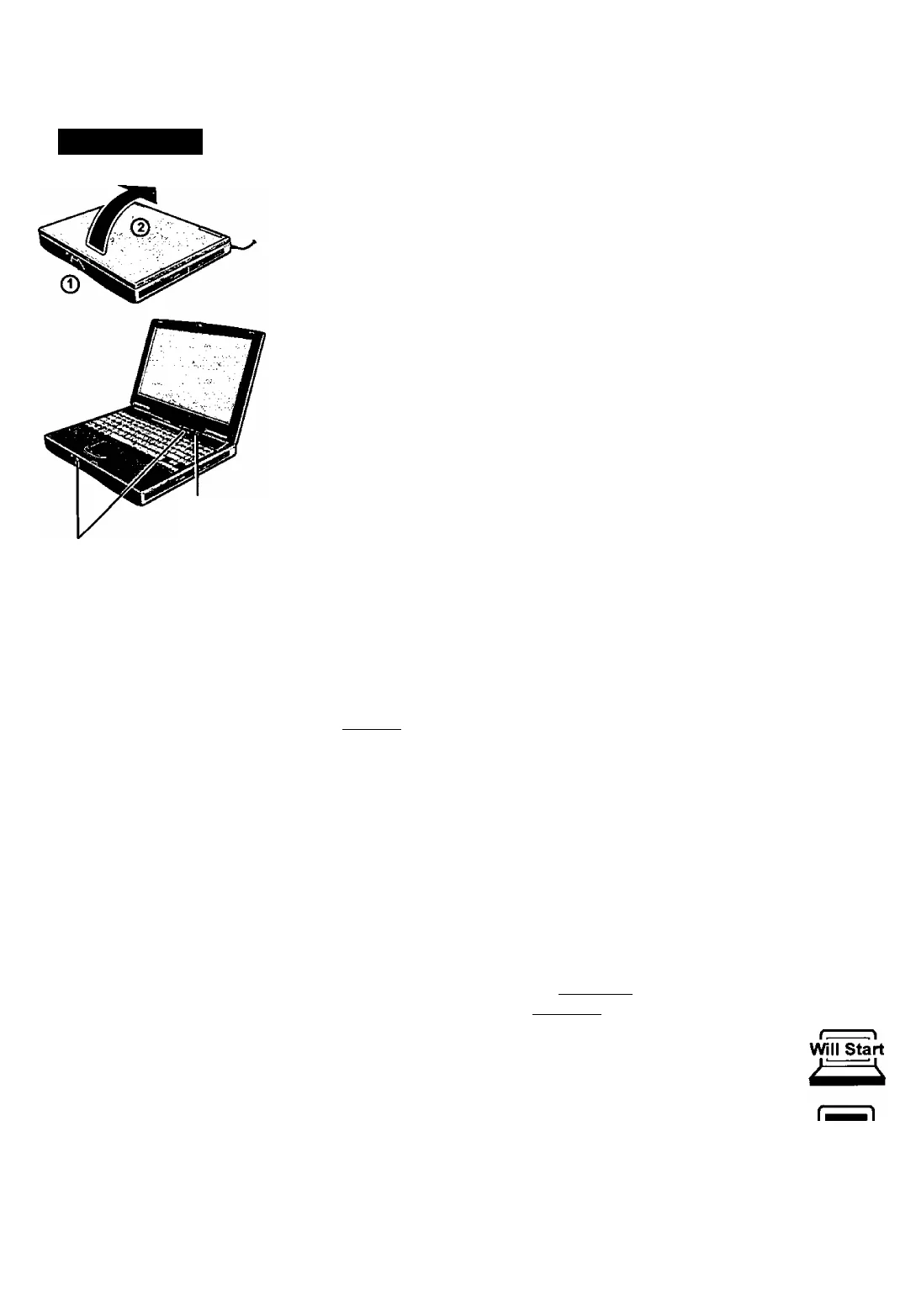
starting Up/Shutting Down
Starting Up
Power
Switch cl)
Power Indicator ®
Open the display
S
Slide the latch as shown.
Lift open the display.
Turn your computer on
Press the power switch and hold it for approximately one second until the power indicator
turns on before releasing it.
• While booting, avoid the following until the hard disk drive indicator (g) has
turned off.
• Connecting or disconnecting the AC adaptor.
• Touching the power switch.
• Performing any keyboard or touch pad (or external mouse) operations.
• Closing the display.
• Once the computer is powered off, you must wait at least ten seconds before pow
ering it on again.
• When the CPU temperature rises, the computer may not power on to prevent the
CPU from overheating. Should this happen, allow the computer to cool down then
switch the power on again.
If the computer still does not power on, contact Panasonic Technical Support.
NOTE>
You may encounter the following situations when the computer is turned on at very
low temperatures. These functions are designed to prevent hard disk drive malfunc
tions that may occur at low temperatures.
• The message “Warming up the system” is displayed, and start-up takes longer than
usual (a few minutes or more).
In this case, wait for the computer to start up.
• The power indicator will blink quickly (in green); in this case, the power does not
turn on, or the computer does not resume from standby or hibernation mode.
To start the computer, leave it in an environment with a temperature of 5®C (41 °F}
or more for about an hour, and try turning the power on once more.
14
If [Enter Password] is displayed
Enter your password* and press C Enter ). (Cj* “Security Measures”)
The correct password
Enter Password [ ]
Three incorrect attempts
or
No password for about a minute
Will Not Start
(Power of
* Supervisor Password or User Password set in the Setup Utility (not
the Windows password).
When an application or file that was previously displayed
appears on your screen
The standby or hibernation mode has been set (q= “Standby/Hibemation
Functions”).










